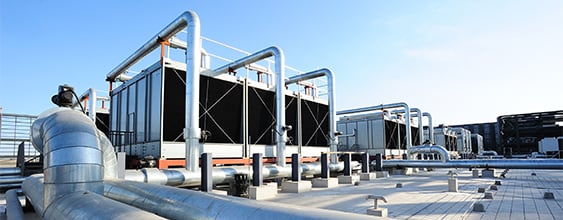The past few years has seen the emergence of a number of energy technologies, each of which is targeted to reduce reliance on carbon-intensive fuels and cut greenhouse gas emissions.
One of the fuels mentioned as a potential gamechanger for Canada’s low carbon future is hydrogen. Over several decades, hydrogen has become a more safe, stable, and secure fuel to use for powering industry, buildings, and vehicles. And it presents a real opportunity for economic growth throughout the country based on available renewable energy resources already built or potentially available, including win in the Maritimes, hydroelectric in B.C., Manitoba, Ontario and Quebec, wind and solar in the Prairies, and wind/geothermal in the North.
Creating the Resource
The science behind the production of green hydrogen out of water — as well as its application as a fuel source — has been well known for decades. However, the recent realization of hydrogen’s advantages when compared to traditional carbon-based fuels have kicked off rapid development and expansion of these technologies in anticipation of the transition to low-carbon energy supply.
The base process is simple; fresh water is purified, and then split into hydrogen and oxygen with the use of electricity in a process known as electrolysis. The hydrogen is then gathered, cleaned up, compressed, and then can be used as a fuel, energy source, or may be further refined into a derivative such as ammonia for transportation.
There are many flavors to electrolysis — PEM (polymer electrolyte membrane) electrolysis, AWE (Alkaline Water Electrolysis) and AEM (anion exchange membrane) are typical electrolysis technologies that are currently seen in industry. However, technology developers are constantly working to develop and refine new electrolysis variations to overcome challenges currently seen when developing these projects. For example, electrolysis technology using seawater in lieu of fresh water is currently being piloted for future industry use. Each style of electrolysis comes with its own set of pros and cons to be evaluated to make the best choice for the project at hand.
While electrolysis technology has been around for decades, the concept of driving it with green energy — such as wind, solar, or hydroelectric energy — is the key ingredient behind the huge industry interest being seen now. When this ‘green’ energy is used to generate hydrogen, the end product is effective energy-source produced with no greenhouse gas emissions that can be transported and used wherever required.
Not only is the creation of hydrogen a process free of green-house gas emissions, but its use is completely free of carbon dioxide emissions as well. When a traditional carbon-based fuel is burned for fuel (a process known as oxidation) the carbon within the fuel is joined with oxygen to produce carbon dioxide. When the hydrogen undergoes the same oxidation process (either by burning it or in a fuel cell), the hydrogen atoms are joined with oxygen to produce water. As the world further adopts the use of hydrogen as a fuel to replace fossil fuels in everyday activities, such as transportation or building heating, greenhouse gas emissions will decrease as a result.
Wherever there is an abundant supply of water and green energy, the potential production volumes of green hydrogen are high. Canada is uniquely advantaged in this regard, with the largest supply of fresh water in the world and significant opportunities for green power in the form of wind, hydro or geothermal energy just waiting to be captured. If desalinated seawater is used as a water supply, the number of viable areas that could develop hydrogen production skyrockets. Regions that choose to develop a hydrogen industry may look forward to economic returns through supporting local industries, selling the hydrogen on export markets, realizing tax revenue for local governments, and job creation.
Not Without its Challenges
As with the adoption of most other new technologies, developing and incorporating hydrogen on a large scale will face its own issues to overcome.
The rapid global interest in the transition to green hydrogen has already been seen to present supply chain challenges to the manufacturers of key equipment, making co-operation, communication, and risk management vital to ensure projects are able to be completed on time. As well, this transition will challenge all involved — engineers and manufacturers will need to quickly grow their expertise and knowledge to ensure hydrogen can be produced and transported effectively and safely. Similarly, governments will need to rely on this growing global expertise to implement new policies, codes, and standards to allow the sector to successfully grow at the risking rate of demand. The global adoption of hydrogen will truly be a massive undertaking, requiring collaboration and co-operation with everyone involved.
Another key challenge the industry faces is public perception. As with any new technology, the acceptance of the greater public will not be blindly given – it must be earned. And, as with any new technology, any perceived safety issues will deal massive blows and setbacks to overall acceptance. For its part, the burgeoning industry has taken these safety concerns to heart, with long-standing safety considerations and learnings in ammonia and petrochemical industries being applied and modified to ensure that green hydrogen can be produced and transported safely, without fear of harming the public or environment. Early community engagement to listen to and address concerns of the public while educating and overcoming pre-existing prejudices should be a key activity for any hydrogen project; without the public’s backing and acceptance, the shift to green hydrogen becomes significantly more difficult, if not impossible.
While the industry is poised to quickly overcome most of these key challenges and adopt green hydrogen at a breathtaking pace, cooperation and collaboration between governments, producers and the public will be a key driver in how much of an impact green hydrogen will have in the short-term during the energy transition.
Moving the Industry Forward
The directive to adopt and expand the use of green hydrogen, as part of the global energy transition to low-carbon fuels, has been made clear by leaders from around the world. Outcomes from the Paris and Glasgow UN Conference on Climate (COP21 and COP26 respectively) have generated global demand for green hydrogen (which is expected to reach 660MT by 2050). Further instability in the global energy supply chain have prompted nations around the world to prioritize green energy supplies – either produced domestically or sourced from reliable trade partners like Canada.
The world is quickly moving forward through the clean energy transition – and hydrogen will play a pivotal role. Cases for the use of hydrogen are rapidly expanding. Policy and regulatory frameworks are quickly coming into force. Energy consumers are increasingly interested in using hydrogen to both cut emissions and secure supply. International demand for hydrogen as the next mainstream energy commodity is beginning to materialize. Amongst all of this rapid change, Canada finds itself in an ideal position to capitalize on this global opportunity and become the world’s foremost supplier and partner in the green hydrogen economy.
Beverly Pilling is the National Market Lead for Hydrogen for WSP.
Michael Fabrik and Steve Waldner are Lead Project Engineers with WSP.















